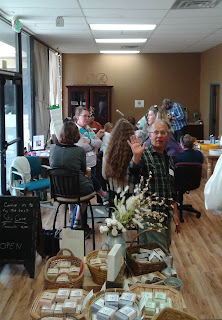It seems we spend less and less time outdoors, leading to a
generation that has respects and protects the outdoors less. We can appreciate
things better when we experience them.
So how do we give out children good outdoor experiences? Here
are 10 ways to help children appreciate the outdoors (and create memories).
1. Visit the moon every night. Before going to bed, take a step outside to
see the moon. What phase is it in? How bright is it? Is it visible?
2. Collect things outside to use for crafts or just
a table decoration inside. You can do t his in your yard or a park. Look for
unusual rocks, for seed pods, dried flowers, unusual shaped sticks, dried
leaves, etc.
3. Plant a garden. If you don’t have the space outside
for a garden, plant something in a pot that can be outside or if absolutely necessary,
inside.
4. Go for the same walk at different times of year. Going
for the same walk at different times of year helps children to recognize the
changes that happen with the seasons from green leaves to colored leaves to no
leaves.
5. Visit a farm. Its easy to visit a farm in autumn
when many have pumpkin festivals. Better
yes, volunteer on a farm. Organic farms are very labor intensive and often
welcome volunteers. We certainly do on our farm.
6. Learn a constellation. Look up at the skin at
night and learn at least on constellation. The Big Dipper is one of the easiest
to learn if you live in the Northern Hemisphere. Learn about the Big Dipper here.
7. Identify the parts of a flower. Take a really
close look at a flower. Do you see the stigma, the petals, the anther? Here is
a nice flower diagram.
8. Find a nice looking rock. Bring it home and
paint it to use as a paperweight.
9. Walk along a stream. Look for life in the stream.
This can be small fish, algae, even crawdads.
10.
Take a short walk outside everyday, no matter
what the weather. Even if its only for 10-15 minutes, being outside can improve
health and bring an appreciation for nature.
Read the REI (Recreational Equipment, Inc.) Report “The Path Ahead”
















